British Isles Gothic
1/54
There's no tags or description
Looks like no tags are added yet.
Name | Mastery | Learn | Test | Matching | Spaced |
|---|
No study sessions yet.
55 Terms
Norman Gothic
This style was characterized by semi-circular arched windows
Transitional Gothic
This style was characterized by the introduction of pointed arches replacing the round.
Early English Gothic
Lancet or First Pointed Style
This style was characterized by long, pointed, narrow, lancet windows
Decorated Gothic
Second Pointed, Geometrical or Curvilinear
This style was characterized by fanciful window tracery and divided into two periods namely:
Decorated Geometric
principal of the window with several lights surmounted by a circle.
Decorated Curvilinear
window is filled with flowing tracery of leaf and dagger shapes, trefoils, quatrefoils and cinquefoils.
Perpendicular Gothic
3rd Pointed or Rectilinear
This style was characterized by strong vertical lines in window tracery
Tudor Gothic
Late Perpendicular
This style was a shift from the pointed, ornate Gothic style to the plainer Renaissance style.
Four-centered arch or the Tudor Arch, Oriel Window, Timber frame, Half-timbering, broach spire
following features Tudor Gothic was characterized from
Oriel Window
This window projects from the wall and does not extend to the ground and often supported by brackets or corbels.
bracket or corbels
Oriel window projects from the wall and does not extend to the ground and often supported by?
Elizabethan Gothic
was characterized by windows with vertical mullions and horizontal transoms.
four centered arch or tudor arch
Tudor Gothic features
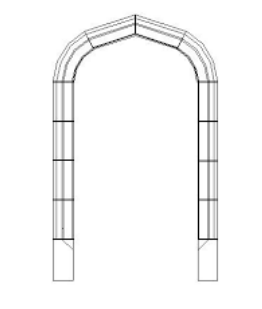
Oriel window
Tudor Gothic features

Timber frame
Tudor Gothic features

Half-timbering
Tudor Gothic features
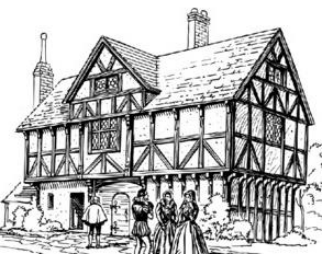
Broach Spire
Tudor Gothic features
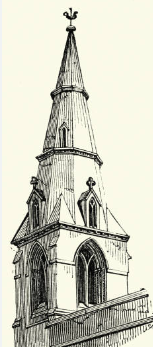
Early English Vaulting
the quadripartite ribbed vault came into general use. Wall ribs or formerets came into use. The ploughshare twist is produced by raising the springing of the wall rib.
Decorated Vaulting
addition of lierne ribs (short intermediate ribs) produced the star-shaped pattern called stellar vaulting. The intersection of the ribs are covered by a projecting ornament called the boss.
Perpendicular Vaulting
the intricate stellar vaulting led to the type known as the fan, palm or conoidal vaulting
Tudor Vaulting
use of the four-centered (Tudor) arch and fan vaulting.
stellar vaulting
star-shaped pattern lierne ribs is called?
Boss
The intersection of the ribs are covered by a projecting ornament called ______
Pendant
sculpted ornament or elongated boss terminating the fan vaulting
Trussed Rafter Roof, Tie Beam Roof, Hammer-beam, Double Hammer-beam, Collar-braced roof, Aisle Roof
Types of Timber Church Roofs
Trussed-rafter roof
structural support for roofs
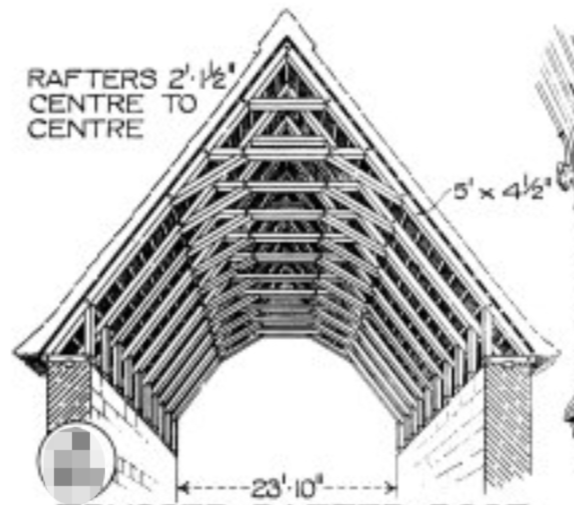
Tie-beam roof
Simplest form; two rafters pitching one against another
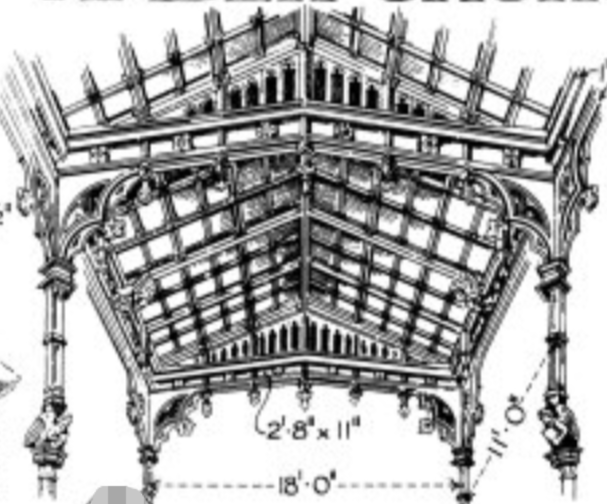
Hammer-beam roof
Roof structure where short horizontal beams are supported by curved braces, creating an open space below without the need for vertical supports.
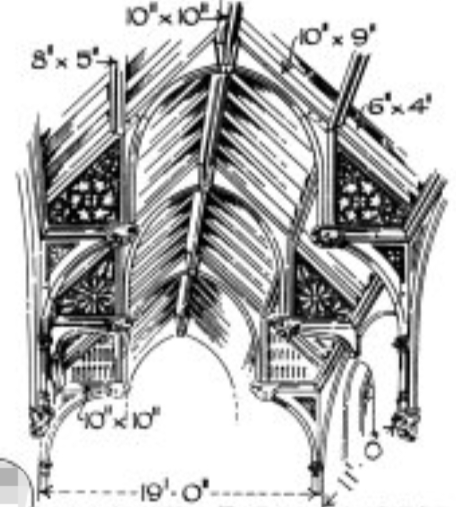
Double hammer-beam roof
Consists of two horizontal beams supported by curved braces, creating a decorative and functional ceiling structure.

Hugh Herland
The most famous Hammer-beam example was designed (1399) by the master carpenter, ____________, for Westminster Hall. Not only the largest hammer-beam roof in England, this may well be the very first to have been built.
Collar-braced roof
Is a simplified hammer-beam form.
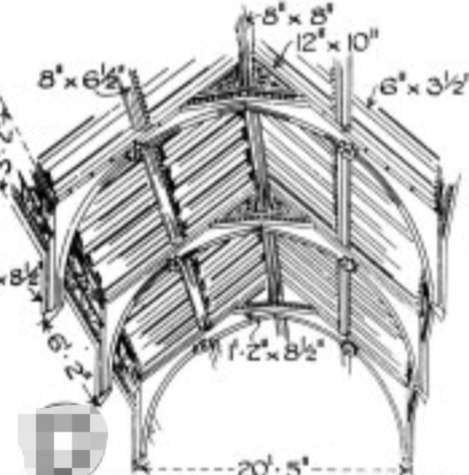
Aisle roof
Merely a continuation of the rafters of the nave
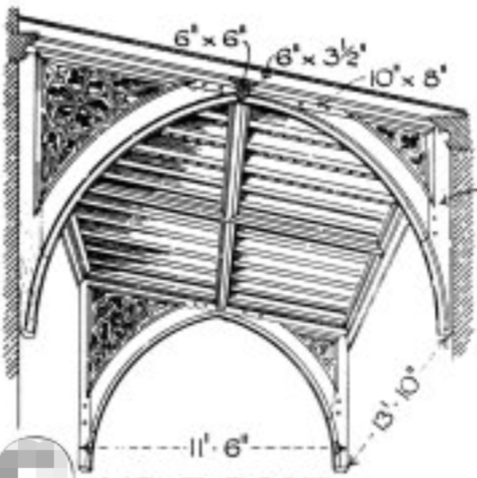
Barrel roof
A type of roof that has a curved, arch-like shape resembling the inside of a barrel.
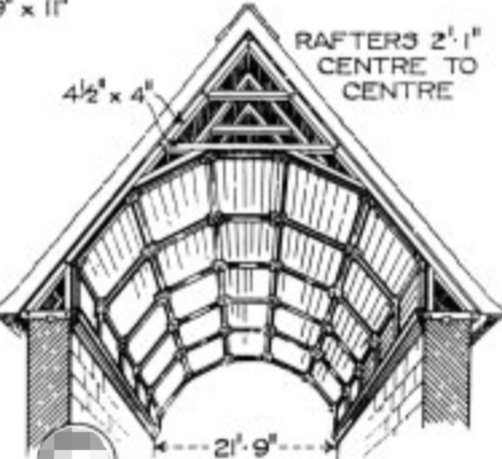
Canterbury Cathedral
was a mixture of styles with the choir reconstructed in the 12th century; nave in the 14th century; cloisters in the early 15th century.
Exeter Cathedral
is called a Decorated Gothic Cathedral “par excellence”. Its beautiful nave boasts of the longest unbroken Gothic ceiling in the world. Its magnificent west front is covered with a Decorated Gothic image screen
Gloucester Cathedral
is a fusion of Norman Romanesque & Perpendicular Gothic. The cathedral was graced by the filming of the 1st, 2nd and 6th Harry Potter movies. It has a beautiful cloister fan vaulting (1412). It has one of the largest medieval stained glass windows in England.
Hereford Cathedral
is famous for its library of chained books and for the ‘Mappa Mundi’, a 13th-century map of the world.
King’s College Chapel, Cambridge University
by Reginald Ely, is one of the finest examples of late Gothic or Perpendicular Gothic style. It features the world's largest fan vault and stained glass windows
Lichfield Cathedral
is the only medieval English cathedral with 3 spires and dedicated to St. Chad and St. Mary. Its façade is a giant sculpture gallery
Lincoln Cathedral
is one of the most important Medieval cathedrals in England and a prominent landmark visible for miles around. It has been featured in two major films: Da Vinci Code and Young Victoria.
Peterborough Cathedral
has a magnificent façade of a Gothic screen with 3 enormous arches.
Salisbury Cathedral
has a spire (123 m.), the tallest in the world from this period and the tallest in UK today. It contains the world's oldest working clock
Wells Cathedral
is first English cathedral to be built entirely in the new Gothic style.
Its west front is said to have the finest collection of statuary in Europe, retaining almost 300 of its original medieval statues
Westminster Abbey Cathedral
is the traditional place of coronation and burial site for the British monarchs.
Winchester Cathedral
is the longest Gothic cathedral in Europe.
York Minster
is the second largest Gothic cathedral of Northern Europe
Its octagonal Chapter House ceiling is a masterpiece in masonry & stained glass
Conway Castle
was designed for King Edward I by master mason James of St. George, a renowned and gifted castle architect
Caernarvon Castle
is architecturally one of the most impressive of all of the castles of Edward I in Wales. It was designed by master mason James of St. George
Beaumaris Castle
was an unfinished masterpiece & the last & the largest of the Edwardian castles in Wales. It began in 1295 & construction lasted for 35 years.
Manor Houses
were built by wealthy trading families of the first half of the 16th century.
Haddon Hall
has been described as the most complete and the most interesting house of its period.
Hampton Court Palace
is a Tudor palace, developed by Cardinal Wolsey and later Henry VIII, alongside a baroque palace built by William III and Mary II. It has a beautiful hammer beam timber ceiling and a maze garden.
Bramall Hall
is a timber-framed Tudor manor house
The Hereford Mappa Mundi
is unique in Britain's heritage; an outstanding treasure of the medieval world, it records how 13th cent. scholars interpreted the world in spiritual as well as geographical terms.
James of St. George
was the creative genius of Beaumaris Castle and with this he had perfected the concept of the "concentric castle".